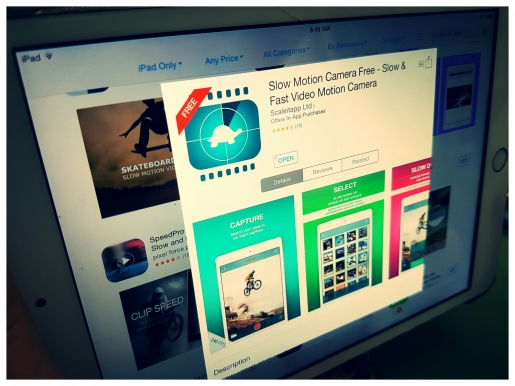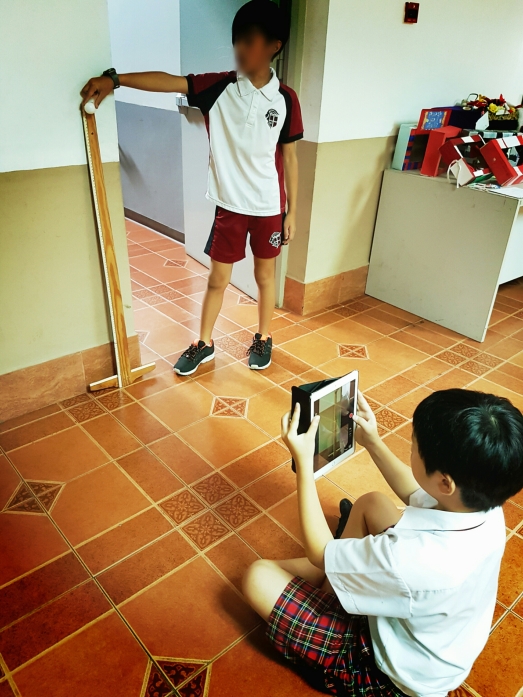Slow motion (slowmo) is a video effect in which time appears to be slowed down. To create a slowmo video, simply record something and then apply the effect. When you watch it back, the movie will be reduced in speed automatically. A slowmo t00l is available on newer iPads (a pre-loaded option in the standard video recorder), or alternatively there are many slowmo apps – just search slow motion in your favourite app store. Below is one I would recommend:
And the best thing is: there are loads of uses for slow motion in the classroom! A colleague of mine found an excellent one. In a science lesson, the pupils were investigating the bounciness of balls, however they were having difficulties recording how high the ball went up the scale. The balls were simply moving too quickly. The simple solution was to video the test on an iPad and then watch the slow motion back.
It truly worked well and increased the accuracy of the results. Here is a recording showing you one of the student’s videos (unfortunately YouTube has compressed it and you can’t see the numbers as clearly):
How else could slowmo be used in lessons?
- In physical education, record a dance or gymnastics move and then watch it back. This is great for evaluation purposes! Similarly, use it to teach throwing/batting techniques.
- Make a ‘slow mation‘.
- Use the effect to create a dramatic video i.e. a fight scene.
- Slow down science experiments. For instance, elephant’s toothpaste.
- Inspire some descriptive writing by showing some interesting slowmo videos from YouTube i.e. The Slow Mo Guys.
Have you used technology in a science lesson? What did you do? Let me know by commenting below.




